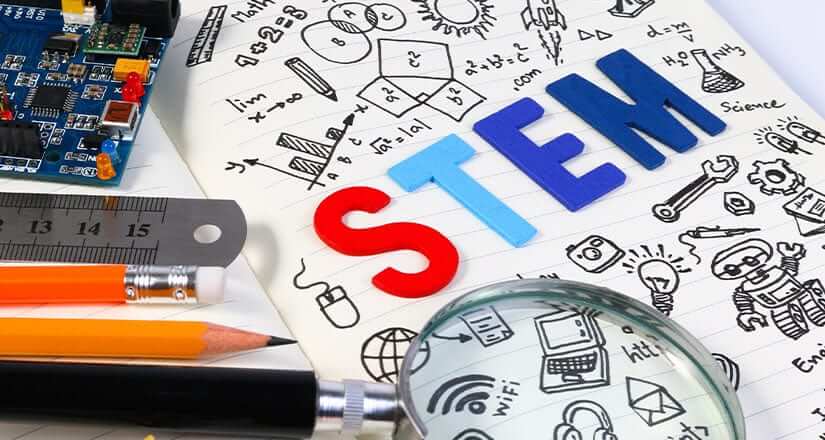All of a sudden, it seems that all of our traditional technology and computer classrooms are steadily giving way to the STEM (Science Technology Engineering and Mathematics) Lab. The computer instructors among us are finding themselves being forced out of their comfort zones and into unfamiliar places (physically and instructionally), asking themselves, “Now what?”
As a veteran of this transition, my first piece of advice is this: take a deep breath and relax. We’ll get through this thing together. Instead of looking at the transition as a daunting task or an inconvenient interruption, embrace the change. Building a STEM lab from scratch can be a challenge, but I think you will find it to be a rewarding experience and one that will give you a sense of accomplishment. Here are six ways you can prepare for the transition and thrive in your new assignment.
- Research
Fortunately for us educators, there is no shortage of STEM-related research material out there. Start by checking out your local book seller. Grab a coffee and browse the do-it-yourself section. There are many STEM project ideas that can come straight out of home improvement guides. Simple carpentry projects require measuring (math,) designing (engineering,) tool usage (technology). If you are building a birdhouse, you could even incorporate the science of the habitat. Electrical circuits can be made with a simple design, added switches, multiple loads etc. Inexpensive PVC pipes and connectors can be used to demonstrate how plumbing works. These projects not only integrate the elements of STEM, but they can lead to much-in-demand job skills and related vocational careers.
Search online. Many teachers have recorded videos explaining their favorite STEM projects, successful experiences, and even the best places to shop for materials. Join STEM forums like NSTA.org (National Science Teaching Association).
Interview others already in the STEM field. Do not limit your scope to fellow teachers. Branch out your contacts to include engineers, builders, people in the medical field, and so on. Not only will you get inspiration for interesting and engaging projects, but you may gain potential class speakers as a result.
Check your state department of education’s learning standards for science, math and technology. As you attempt to fulfill the requirements for the standards, you will find that your projects will grow in complexity and take on new dimensions.
Hold discussions with your students. Ask them about their interests. Their input may lead to project ideas. For example: If they like video gaming then plan a lesson around video game design. This can include not only the coding, but the physics of the game, the artistry of the sprites, the backgrounds and more. If the students have input in the projects they will be doing, they are more likely to be engaged in the learning process.
- Planning
Design your lab space. Plan your area to have a place for students to build and create. This includes an open area for planning and drawing. There should be a method of presenting the finished work and ideas to others. Also, reserve a place for storage. As more project ideas come rolling in, you will need a place to showcase them as well as a place to house materials. Some materials are consumable and will need to be re-ordered, so keep track of these.
Sketch the vision of your makerspace. Include a work bench, tool storage, and a place for parts, bits, and bobs. Allow room for a 3D printer and computer workstation.
You do not need to reinvent the wheel. Your own original ideas will come with time as you get more comfortable in the process. For now, it’s alright to borrow ideas from others.
- Resources
With STEM, there are places to go and people to see. Make a trip to your local hobby store. You will not only find project ideas and kits readily available off the shelf, but you will most likely find a store clerk willing to give you and your school an educator or bulk discount on purchases. They may even be kind enough to donate to your cause.
Sites like NJCTL.org (New Jersey Center for Teaching and Learning) offer free downloadable content including pre-packaged lesson plans, presentations and worksheets for science, mathematics, and technology for every grade level. This makes STEM life easier – especially in the younger grades.
- Budgeting
Money is tight and you are running the STEM program on a shoe-string budget. Perhaps you cannot afford to order out of those expensive catalogs. Not to worry. You can acquire most of your supplies for cheap or even for nothing. Use the catalogs for ideas. Perhaps there are some kits you can re-create yourself for much less. This goes back to the planning phase. Design your projects to use inexpensive or recycled materials. Your shopping list may include products from a dollar store. Wood is generally inexpensive and forgiving when it comes to building small crafts. Set up a donation bin at your school and let parents know what you need – paper towel rolls, empty cans, water bottles … whatever. Don’t be embarrassed to garbage-pick. You never know what you might find driving around town after a garage sale.
- Projects
Your STEM projects might be created for individual grade levels or designed around a theme. Theme-based projects are those that carry over to multiple class periods or even an entire marking period. Theme-based lessons can include carpentry, electricity, food science, robotics, bridge engineering, and rocketry, to name a few. Individual grade level projects are usually smaller lessons. They may be attached to a theme but are designed to be done in one class session or period. These types of lessons could include a quick build from a ready-made kit or a lab experiment.
Keep records of your lesson plans so you can refer to your materials list for future orders and make notes and modifications for future lessons.
- Promoting
Now that you’ve got your STEM program well underway, it’s time to think about spreading the word. This is not only great public relations for your school but will give your students a great boost to their self-image as they demonstrate what they can do.
Host competitions at your school. Invite other schools in your community to participate in robotics, bridge-building, STEM showcases, innovation fairs – whatever it takes to show off what your students can do. Trep$, the Entrepreneurship Education Program for grades 4 through 8, is a great way to have students market their project ideas. It also serves as an end-goal for your STEM program. It’s a way for students to work on their communication skills as they must discuss the design and engineering that went into making their product as they try to get others to buy it.
Have a Family STEM Night at your school. Invite parents to attend. Get teacher volunteers willing to demonstrate some fun and interactive projects. Use this time to inform parents about your program and the great things you are doing.
Christopher Masullo, Ed.D.





